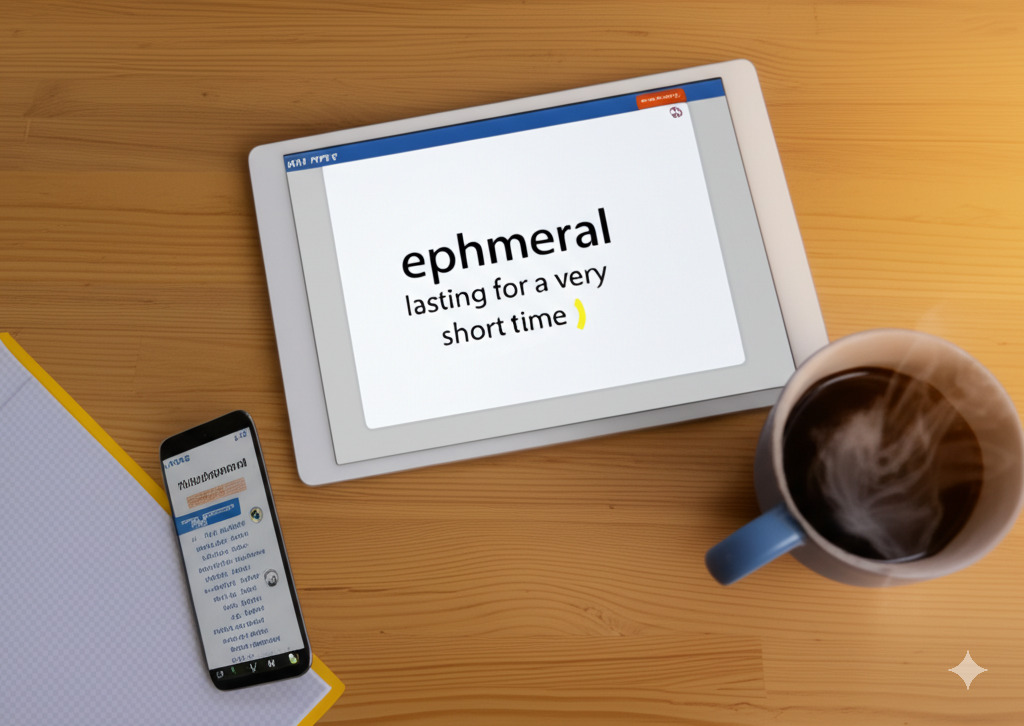The SAT Reading and Writing section tests more than just your ability to understand passages and identify grammatical errors; a strong vocabulary is a crucial underpinning for success. Many students find vocabulary building daunting, often associating it with memorizing endless lists of obscure words. However, improving your SAT vocabulary doesn’t have to be an insurmountable task. With the right strategies, you can make significant progress relatively quickly, boosting your confidence and your score.
This guide focuses on efficient and effective methods to enhance your vocabulary for the SAT. We’ll move beyond rote memorization and explore techniques that promote genuine understanding and retention, helping you not only recognize words but also use them correctly in context – precisely what the SAT demands.
Why Vocabulary Still Matters on the Digital SAT
While the Digital SAT has shifted away from the old sentence completion questions that directly tested obscure vocabulary, a robust lexicon remains essential. Here’s why:
- Reading Comprehension: The passages, though shorter now, still employ sophisticated language. Encountering several unfamiliar words in a short passage can significantly hinder your ability to grasp the main idea, understand the author’s tone, or identify key details and inferences.
- Words in Context Questions: This question type directly assesses your understanding of vocabulary. It asks you to choose the word or phrase that best fits the meaning of the sentence within the passage’s context. This requires not just knowing a word’s definition but understanding its nuances and connotations.
- Analyzing Tone and Style: An author’s word choice is fundamental to establishing tone (e.g., critical, laudatory, ambivalent) and style. Recognizing the subtle meanings of words helps you accurately interpret these aspects of the text.
- Efficiency: Knowing words automatically saves precious time. If you constantly have to pause and decipher vocabulary, you’ll struggle to finish the section within the allotted time.
MOCK EXAM
Take a realistic SAT mock exam to assess your vocabulary gaps, identify weak points, and simulate test conditions before the real thing.

Foundational Principles for Rapid Vocabulary Growth
Before diving into specific techniques, understand these core principles:
- Active Recall Over Passive Recognition: Simply reading a word list isn’t enough. You need to actively test yourself, trying to recall the definition or use the word in a sentence before looking at the answer. This strengthens memory pathways.
- Context is King: Memorizing definitions in isolation is less effective than learning words within sentences or passages. Context provides clues to meaning and helps you understand how a word is actually used.
- Spaced Repetition Systems (SRS): Our brains forget information over time. SRS combats this by showing you information (like flashcards) at increasing intervals – just as you’re about to forget it. This is highly efficient for long-term retention.
- Focus on High-Frequency Words: You don’t need to learn every obscure word in the dictionary. Focus your efforts on words that appear more frequently on the SAT. Many prep resources provide lists of these “high-yield” words.
Top Strategies for Quick SAT Vocabulary Improvement
1. Master High-Frequency SAT Word Lists (Smartly)
Yes, word lists have their place, but use them strategically. Find reputable lists – often categorized by difficulty or frequency – from official SAT resources or established test prep companies. Don’t just read them.
- Create Flashcards: Make physical or digital flashcards (more on this below).
- Group Related Words: Group words by theme (e.g., words related to criticism, praise, uncertainty) or by root.
- Use Them in Sentences: For each word, write your own original sentence demonstrating its meaning in context.
- Focus on Understanding, Not Just Memorizing: Aim to grasp the concept behind the word, not just its dictionary definition.

2. Decode Words with Roots, Prefixes, and Suffixes
This is arguably one of the most powerful vocabulary-building techniques. Many English words are derived from Latin and Greek roots. Learning common prefixes (beginnings), suffixes (endings), and roots (cores) allows you to decipher unfamiliar words.
- Example Prefixes: `pre-` (before), `post-` (after), `un-` (not), `re-` (again), `sub-` (under), `trans-` (across).
- Example Roots: `port` (carry), `scrib/script` (write), `dict` (say), `spec` (see), `bene` (good), `mal` (bad).
- Example Suffixes: `-ology` (study of), `-able/ible` (capable of), `-fy` (make), `-ism` (belief in).
If you encounter “benevolent,” knowing `bene` means “good” helps you infer it’s a positive word. If you see “transport,” `trans` (across) + `port` (carry) tells you it means to carry something across. Dedicate time to learning the most common affixes and roots; the payoff is enormous.
3. Read Widely and Actively
Exposing yourself to the type of language used on the SAT is crucial. Focus on high-quality reading materials that often employ sophisticated vocabulary.
- What to Read: Reputable newspapers (e.g., The New York Times, Wall Street Journal), magazines (e.g., The New Yorker, The Atlantic, Scientific American), non-fiction books on history or science, and even classic literature often featured in SAT passages.
- Read Actively: Don’t just skim. When you encounter an unfamiliar word, don’t skip it!
- Look It Up Immediately: Use a dictionary app or website.
- Keep a Vocabulary Journal: Write down the new word, its definition, the sentence you found it in, and try writing your own sentence. Note any roots or affixes.
- Pay Attention to Context: Try to guess the word’s meaning from the surrounding text before looking it up. This hones your context clue skills.
4. Utilize Digital Flashcard Apps (SRS)
Digital flashcard apps like Anki, Quizlet, Brainscape, or Memrise are game-changers for vocabulary. They incorporate Spaced Repetition Systems (SRS) automatically.
- How SRS Works: You rate how well you knew a card (e.g., “Easy,” “Good,” “Hard”). The app then schedules the next review based on your rating – easy cards appear less frequently, hard cards more often.
- Creating Effective Digital Flashcards:
- Front: Word
- Back:
- Clear definition(s)
- An example sentence (ideally from your reading or an official source)
- Synonyms/Antonyms (optional but helpful)
- Root/Prefix/Suffix breakdown (if applicable)
- Consistency is Key: Spend just 10-15 minutes daily reviewing your digital flashcards. The apps manage the scheduling; you just need to show up.
5. Master Context Clues
Even with a strong vocabulary, you’ll encounter unfamiliar words. The SAT specifically tests your ability to use context clues. Practice identifying different types:
- Definition/Restatement: The meaning is explicitly stated or rephrased nearby (“…the somnolent cat, which seemed perpetually sleepy…”).
- Example: Examples illustrating the word’s meaning are given (“He showed great duplicity, such as lying about his whereabouts and secretly meeting with the competitor.”).
- Contrast/Antonym: The word is contrasted with an opposite idea (“Unlike his gregarious brother, he was quite shy and reserved.”).
- Inference/General Sense: You need to infer the meaning from the overall passage context.
Actively look for these clues during your reading and practice SAT questions. Sometimes, even if you think you know a word, context might reveal it’s being used in a less common way.
6. Practice with Official SAT Materials
There’s no substitute for practicing with actual SAT questions. Use official practice tests and questions available on the College Board website and through platforms like Khan Academy.
- Focus on “Words in Context”: Pay close attention to these questions. Analyze why the correct answer is right and, just as importantly, why the incorrect options are wrong. Do they have the wrong connotation? Do they fit grammatically but not logically?
- Analyze Vocabulary in Passages: When reviewing reading passages, circle words you didn’t know. Look them up and add them to your flashcards or journal. Consider how understanding (or not understanding) that word affected your comprehension.
- Simulate Test Conditions: Take full practice sections under timed conditions to see how well you can apply your vocabulary knowledge under pressure.
7. Gamify Your Learning
Make vocabulary learning less of a chore by incorporating games.
- Vocabulary Apps/Websites: Many sites and apps offer vocabulary games (e.g., Freerice, Vocabulary.com).
- Challenge Friends: If you have friends studying for the SAT, quiz each other or compete to see who can use new vocabulary words correctly in conversation.
- Set Personal Challenges: Aim to learn a certain number of new words per week or try to use 3 new words correctly in your writing or conversation each day.
Integrating Strategies & Creating a Study Plan
The key to rapid improvement is combining these strategies consistently.
- Daily Routine (15-30 mins):
- Review digital flashcards (SRS handles the scheduling).
- Learn 1-2 new roots/affixes.
- Weekly Routine:
- Engage in active reading (30-60 mins, a few times a week), looking up words and adding them to your journal/flashcards.
- Complete SAT practice questions focusing on vocabulary and context clues.
- Review your vocabulary journal.
Consistency is far more effective than infrequent marathon sessions. Even short, focused daily effort adds up significantly over weeks.
Common Pitfalls to Avoid
- Passive Learning: Just reading lists or highlighting words without active recall or application.
- Memorizing Without Context: Learning definitions parrot-fashion without understanding nuances or usage.
- Ignoring Roots/Affixes: Missing out on a powerful tool for decoding countless words.
- Using Unreliable Sources: Relying on random internet word lists that aren’t tailored to the SAT.
- Neglecting Practice: Not applying vocabulary knowledge to actual SAT-style questions.
Master SAT Vocabulary & Concepts
Targeted tutoring for SAT Reading & Writing. Boost your score with expert guidance and personalized strategies for vocabulary and comprehension.

Conclusion: Active Learning is Fast Learning
Improving your SAT vocabulary quickly is achievable, but it requires active, strategic effort. Ditch passive memorization and embrace methods that build real understanding: mastering roots and affixes, reading actively, using SRS flashcards effectively, honing context clue skills, and practicing with official materials. By integrating these techniques into a consistent study routine, you’ll not only learn words faster but also retain them better, equipping yourself to confidently tackle the verbal challenges of the SAT and beyond.


